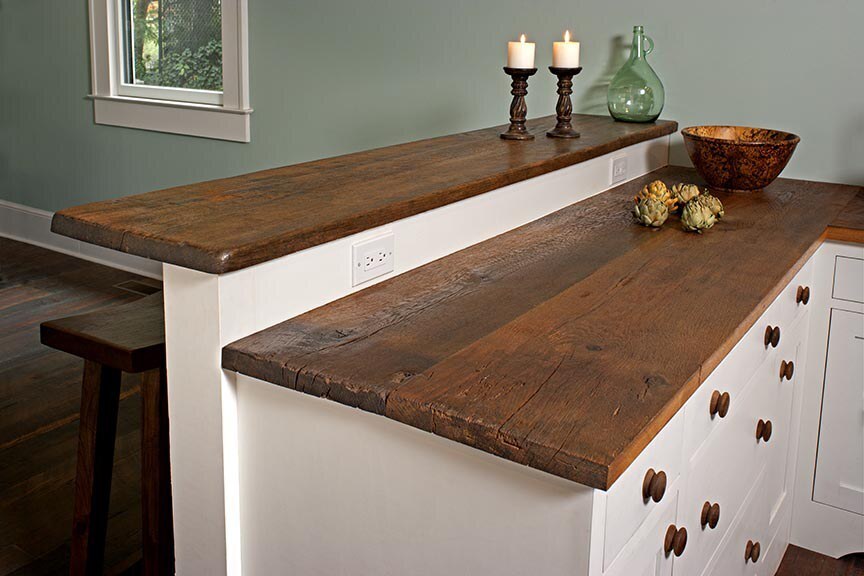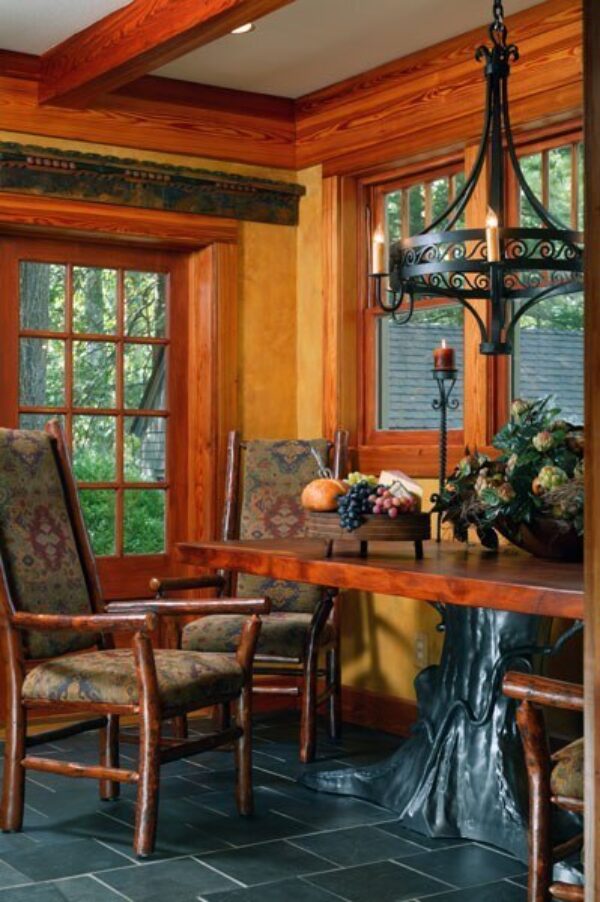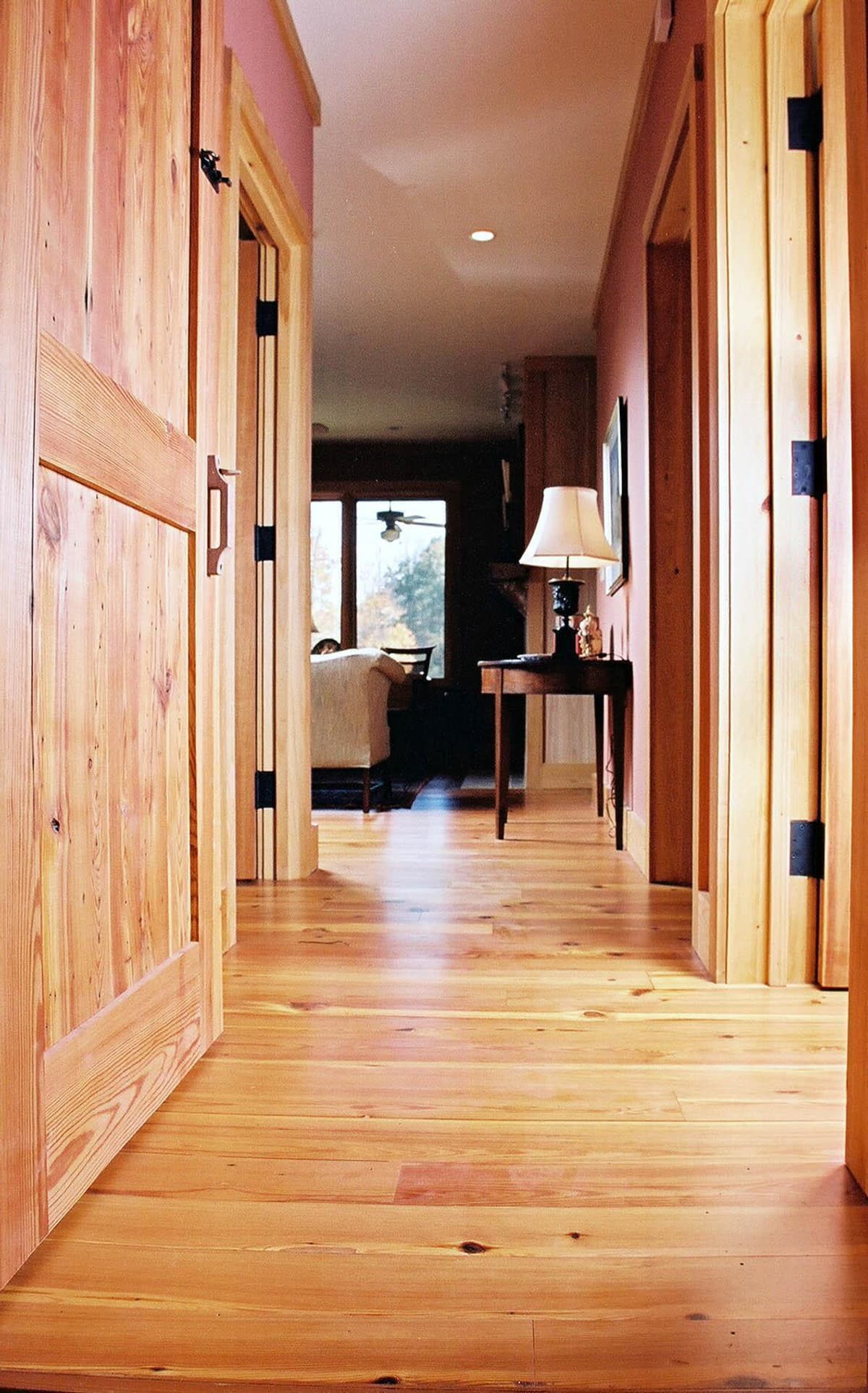
Antique Wood is Not Sustainable

Antique wood that’s authentic as we currently know it is not sustainable and quietly becoming less available. And that includes antique wood products for fine flooring and architectural accents.
Antique wood as we define it today was used in construction that was built before 1920. The trees providing that wood were themselves usually 300-600 years old when cut, and massive. And because they had grown slowly, the grain patterns were tight and their color deep and rich. With dimensions wide and long, distinct beauty, and substantial strength and density, the attributes of our country’s antique wood are unparalleled.
Once cut, “old growth” or “virgin growth” as it’s now called, became raw material for the structure that supported the roofs of textile mills and railway stations, auto manufacturers and baseball stadiums, all across the country. And that included all the factories that fueled the Industrial Revolution of the early 1900’s, as well as buildings and barns and homes that were rapidly multiplying at that time. Not to mention boats and sailing ships.
Around the 1920’s most of the old growth lumber had been harvested, and steel and cement was coming forward as the next building material of choice. But unlike steel and cement, old growth lumber can no longer be replicated.
A Diminishing Natural Resource
We all know stories of how grand old buildings often lay neglected and idle for many years until someone noticed how unique and special they were and the wood they were built with. In many cases treasure troves of antique wood have been turned into fashionable lofts and condos or preserved in historic districts, where that sacred wood will remain in place.
Meanwhile, at other locations velvet deconstruction efforts have made quantities of antique wood available for use in architectural restoration and renovation.
And old growth lumber products command remarkable attention and opportunity in fine homebuilding and upscale commercial construction and it’s integral to multiple design and decorating trends.
But antique wood for flooring, furniture, beams and trim in new projects cannot long be widely manufactured, for it’s a diminishing natural resource that cannot be restored or harvested again.
WHY ANTIQUE WOOD BECAME KNOWN AS RECLAIMED
Even though antique wood has been reclaimed, not all reclaimed wood is actually antique.
The virgin growth timber grew under the American forest canopy slowly and unrestricted for centuries. Many became so large that they retarded the growth of trees around them which we now call 2nd and 3rd growth trees.
Once the large heart pine, American oak, American chestnut and other old growth trees were gone, 2nd and 3rd growth trees had space to grow larger and flourish themselves, and become part of the cycle of change.
While these 2nd and 3rd growth trees were comparable in many respects, they never grew as large and overall they lacked some of the outstanding qualities of the virgin growth trees. They grew faster and were harvested quicker from the 1930’s on, and just don’t qualify as antique wood.
These woods are often what is being reclaimed now and were used to build many mid-century barns and buildings, plus additions to original factories. And this is often what reclaimed wood suppliers are providing to customers today.
In anticipating the inevitable shortage of old growth lumber that’s truly antique, suppliers adjusted descriptions to the more generalized terms : reclaimed wood -reclaimed lumber -reclaimed beams, less there be any misrepresentations.
WHY YOU WANT ANTIQUE WOOD NOW

If you’re renovating an old home and have heart pine floors to repair or sourcing material for historical renovation, authentic antique wood is what you need.
Heart Pine was a mainstay in many homes and buildings that were built during the early 1900’s. Because of it’s durability, it’s necessarily sourced for old as well as quality new construction.
Truly authentic vertical grain heart pine has 6 – 16 growth rings per inch, depending on how close it was to the heartwood within a board.
The most dazzling of grain patterns and densest of heartwood (not sapwood), will ultimately be hardest to find and more expensive for purchase in the future, especially if you’re a purest and grain-nazi.
Emphasis on antique wood often rests on the grain quality, whereas emphasis on reclaimed wood is more associated with wood “character” or aged patina.
The good news is that a reputable reclaimed wood supplier who has experience with both antique and reclaimed wood, can direct you toward the material best suited to your needs. With a sample of any wood being replaced, or a high resolution close-up photo, material can often be provided that match old wood grain patterns.
For more information on authentic antique wood and quality character reclaimed wood,
WHOLE LOG LUMBER RECLAIMED is happy to support your further interest!